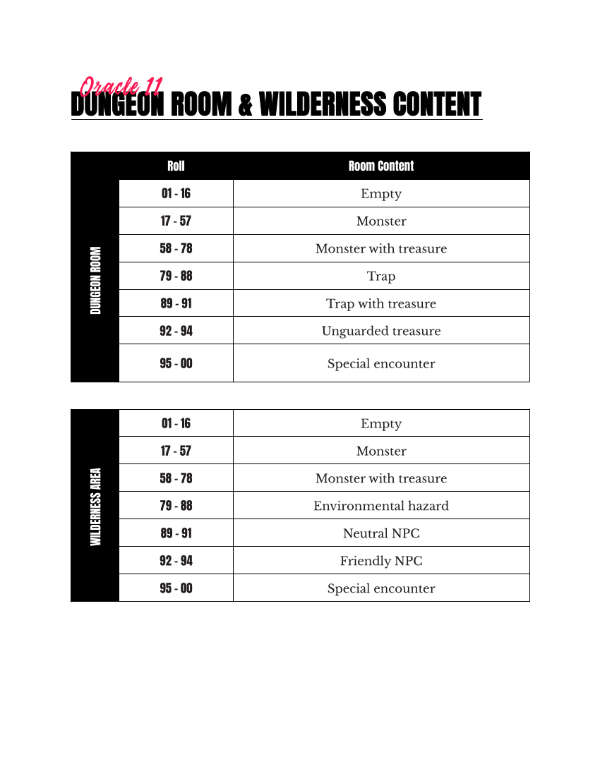Planning and Playing Solo DnD adventures
In this article, we cover the exact steps in planning and playing a solo DnD adventure using the Solo Gaming Tool. This system was designed to be among the easiest solo roleplaying experiences for DnD 5e. At the end of this guide, you’ll know exactly how to play DnD 5e alone, without a DM.
The core planning tool for this system is your setting, its lore, and the Adventure Worksheet. At the end of the article, we bring everything together in a step by step format. Many of the ideas in this article were adapted for DnD 5e using Ironsworn.
Setting and story logic in solo DnD
Before you start you need a rough idea of what kind of adventure you want to play. Your setting and its lore are extremely important. The setting will give you an idea of what’s possible in that world. It also provides a type of story logic that you use to shape your adventure.
This story logic dictates what kind of adventure you’ll be having. If your adventure takes place in Middle Earth, then Tolkien’s works will provide you with “rules” of what can happen in that world. If you want to play a hobbit from the Shire, you won’t be shooting lasers out of your eyes because it isn’t consistent with the game world.
The story logic of your setting is one of the most important aspects of your adventure. It provides essential world-building elements that you can use to steer your adventure. These story elements form the basis of the kind of questions you’ll ask oracles.
If you’re playing with a friend then each player must familiarize themselves with the most important parts of the setting’s lore. The more your friend knows the setting’s lore, the better they will be at driving the story forward. Not every player has to be an expert at knowing the setting, but all players must have at least some knowledge of the game’s world.
A map of your game world is essential if you plan to use this system. The map provides locations for you to explore in your adventure. This is particularly important when you travel between towns. Our system treats traveling the same way it does dungeon crawling and a map will tell you what kind of territory you’ll be exploring.
Planning your solo DnD adventure
To plan and pace your adventure you’ll need the Adventure Worksheet. The Adventure Worksheet is where you write down the most important parts of the adventure.

The quest objective and the Progress Track
To start your adventure, you need a clear objective for your story. Are you looking for treasure? Saving a loved one? Or do you want to overthrow the Dark Lord himself? The goal of the game is to reach your objective. When you reach the objective of your adventure you’ve succeeded.
You reach your objective by accumulating Progress points. You accumulate Progress points for every story event that you consider a milestone in the adventure. Milestones are any kind of in-game event that brings you closer to succeeding in your quest objective.
Example:
Your quest objective is to investigate a series of murders in a small town. Examples of achieving milestones can include:
- Finding important information about the victims.
- Securing the help of the townsfolk.
- Discovering clues about the killer.
The Progress Track’s role in solo DnD
The Oracle RPG system uses the Progress Track to determine the Difficulty Challenge (DC) of skill checks as well as the encounter difficulty. As your adventure progresses the DC of skill checks increase. As you gain more Progress, you also gain Rank. Rank shows how close you are to finishing your adventure and how dangerous your enemies are becoming.
As you progress in your adventure you tick the boxes on the Progress Track. Tick a box for each milestone that brings you closer to your objective. DC starts at 10 and increases with every second milestone.


Solo DnD and experience point rewards
You receive experience points equal to the encounter difficulty of your adventure’s Rank. The higher the Rank of your adventure, the more bonus experience you receive. Consult page 82 of the Dungeon Master’s Guide for the XP thresholds for characters.
Example:
Lorian a level 4 Paladin has freed a town from a local bandit gang. He concluded the quest when it reached Rank 4. He gains the same amount of bonus experience points as defeating a Deadly enemy. On page 82 of the Dungeon Master’s Guide, he sees that the XP threshold for a Deadly enemy at Level 4 is 500 XP. Lorian is awarded 500 XP for freeing the town.
Quest obstacles and setbacks in a solo DnD game
The obstacle is what stands in the way of reaching your objective. If you’re looking for treasure then it could be a perilous dungeon full of dangers. If you need to save a loved one, perhaps they were abducted by a mortal enemy. The obstacle is the enemy in your adventure. If the obstacle wins, you lose.
Instead of accumulating progress, the obstacle accumulates Setback points. When you reach 10 Setback points you fail the adventure outright and the obstacle wins. Setbacks are problems that prevent you from achieving the adventure’s objective. When you receive a setback, mark 1d4 Setback points on the Adventure Worksheet. Then come up with an appropriately bad event that takes place in your scene.
Setbacks can take place in one of three ways:
- Delaying an adventure to perform other tasks (such as leaving a dungeon to heal in a nearby town).
- A critical failure on a skill check.
- Failing a skill check at the worst possible time.
- Rolling a 1 during a Fate roll at the worst possible time.
Example:
You were caught stealing from a corrupt nobleman and need to fool two guards into letting you go. Unfortunately, you roll a 1 during a Deception check and critically fail the action. You need to describe a suitable setback and mark 1d4 Setback points. The guards try to take you into custody.
Characters and story events
The Characters and Story Events section of the worksheet is where you keep track of the characters and story developments of your campaign. Story events are major points in your campaign that are worth keeping track of. In this section, you place NPCs you encounter or create with the the NPC generator.
Story events are a record of major events in your adventure. All important story events that helped shape your adventure should be filled in the Adventure Worksheet.
How to play solo DnD step by step
- Choose a setting. Get a map and familiarize yourself with the lore.
- Fill in the Adventure Worksheet.
- Envision an opening scene. For information on scenes see part 1 of this guide. Instead of a Dungeon Master, ask an oracle to fill in the details. Use the oracles’ answers to create the scene.
- Through roleplaying and your PC’s skills, pursue the objective on the Adventure Worksheet. Use oracles to help create the various scenes along the way.
- Mark Progress points for every major scene that moves you closer to the objective. Mark 1d4 Setback points whenever you experience a major obstacle.
- Explore areas with the dungeon generator.
- Fight any enemies along the way with the monster AI rules.
When you think your story is ready to wrap up. Roll a 1d6 and add your adventure’s Rank. A result of 1 indicates abysmal quest failure, while a result of 6 indicates the happiest possible outcome. Envision the ending based on this roll.











